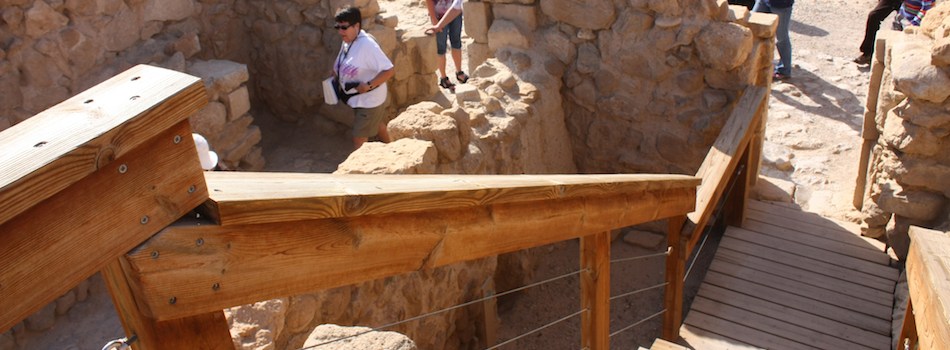
Dead Sea Sites
-
››
-
››
-
››
-
››
-
Address: Kalia
Hours: April-September: 8-5; October-March: 8-4; Friday and holiday eves: 8-3
Telephone: 02-9942235
Admission: Admission to the site: Adults – 29 NIS, Children – 15 NIS
Wheelchair accessibility: Yes. A new trail has been made entirely accessible for people with handicaps in wheelchairs. The trail passes by the ancient water systems in this dry desert area. The special signs posted throughout the site are suitable for visitors with impaired vision.
At the site: restrooms, cafeteria, gift shop, parking
Qumram National Park is the site at which the phenomenal connection was formed between the hidden scrolls found in the Qumran caves and the religious sects of the Judean Desert. The Qumran scrolls were discovered in 1946 by a Bedouin boy in search of a goat that had gone astray, who stumbled upon the cave instead. Inside the cave, the shepherd found clay jars that concealed handwritten scrolls. Following this discovery, over 700 other manuscripts were found nearby, shedding light on the lives of the Judean Desert sects of the Hasmonean period. The sects lived isolated lives in this remote desert area. The most ancient Torah scrolls in the world were found among the manuscripts, preserved surprisingly well by the desert climate conditions. The tour of Qumran National Park, amidst the imposing landscapes of steep, wild cliffs and the Dead Sea, begins with a film at the visitors center that describes the lives of the people that lived there in ancient times. The film is followed by a tour of the ritual baths, dining room, writing room and workshops where clay vessels were made, that give visitors a glimpse of the collective lifestyle that this sect lived. The Qumran National Park is on the itinerary of most Christian tourists who visit the Holy Land, as John the Baptist is believed to have been part of this sect.
Qumran features two primary points of interest: a visitors center with a reception office, museum, and theater; and an archeological site that reveals the remnants of the ancient village.
The site is mostly accessible to people with physical disabilities, though the caves that have been excavated into the mountain are not.
Handicapped parking is located at the entrance to the site. A path leads from the parking lot to the entrance. There are several stairs along the path and ramps without handrails have been built alongside the stairs for accessibility.
To reach the office and gift shop, visitors must climb several stairs. To bypass the stairs, enter the site from the side entrance near the restrooms. This is also the entrance to the trail leading towards the archeological site.
The beginning of the trail is paved with cement, and the rest is a sandstone path that leads to a wooden one. The wheelchair-accessible trail leads to the archeological ruins and ends at a certain point, continuing on to a trail that is not wheelchair accessible to the rest of the site.
The signs along the path are clear and legible.
The site features fully-equipped handicapped restrooms and a wheelchair accessible cafeteria.


